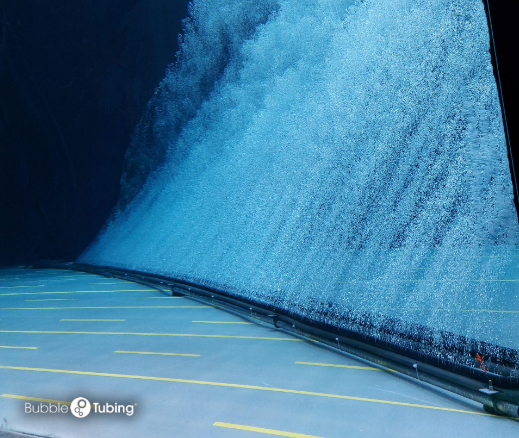
Solutions We Offer
-

Bubble Barriers
Our innovative Bubble Barriers create a wall of air bubbles underwater, effectively containing debris, pollutants, and marine waste while protecting aquatic ecosystems and improving water quality.
-
Bacterius Water Treatment
Improve water quality with Bacterius, a natural solution that uses beneficial bacteria to break down harmful nutrients, reduce algae growth, and support healthy aquatic ecosystems.
-

Floating Fountains
Our floating fountains not only beautify water bodies but also help with water movement, aeration, and debris control, providing both aesthetic and practical benefits.
-

Aeration Technologies
Enhance water health with our advanced aeration systems, designed to oxygenate water, reduce sludge, and improve water clarity, benefiting both aquatic environments and industrial applications.
-

De-icing Technologies
Prevent ice build-up in salt or freshwater environments with our deicing solutions, which protect docks, marine structures, and vessels from ice damage, ensuring smooth operation year-round.

Applications For Bubble Barriers
-
A major concern with hydrocarbon drilling and exploration is the risk of oil spills and their potentially catastrophic impact on the environment. Oil spills during inland waterway transport, as well as diesel, oil, and other fuel leaks during refueling, also pose significant risks.
Bubble Barriers can serve as an effective containment wall in the event of an oil spill around drilling platforms or flatwater facilities, such as marinas and seaports. These systems are installed by submerging Bubble Barriers on the seabed. When compressed air is injected at sufficient quantity and pressure, it creates a water current that forms a bubble barrier. This barrier is difficult for floating elements, such as petroleum molecules, to penetrate. The hydrocarbons are trapped behind the bubble line, allowing for the containment of the oil slick and the implementation of decontamination methods.
Increasingly, port authorities and government bodies are installing Bubble Barriers at port entrances or around refueling boats as a proactive measure to prevent spills. These systems can be set up in advance and activated quickly in the event of an environmental emergency.
-
Bubble Barriers effectively contain harmful fine materials that can damage aquatic habitats, such as those released during dredging or maritime work. While physical barriers can trap sediments, they often restrict boat and wildlife movement. By combining Bubble Barriers with physical barriers, suspended matter is retained, while allowing free passage.
These versatile barriers are easy to install in seaports, rivers, lakes, and reservoirs, helping prevent water clouding and increasing dissolved oxygen. They also reduce the costs and environmental impacts of dredging by preventing sediment from spreading.
Additionally, Bubble Barriers capture plastic waste and debris from rivers before it reaches the ocean, offering a sustainable solution for waste interception. Environmental organizations and cities worldwide are adopting this innovative technology to protect waterways and gather valuable data for better water management.
-
The demand for marine life conservation is growing worldwide. Submerged air bubble barriers not only reduce underwater noise but also create a protective screen to guide fish away from hazards like water intakes, hydroelectric dams, or contaminated areas.
Bubble barriers help protect species like salmon smolts by redirecting them to safe passages, such as fish ladders, using a combination of bubble curtains, strobe lights, and low-frequency sounds. Fish farms also use bubble barriers to secure their installations, preventing jellyfish, algae, and debris from entering fish cages. The system can be activated as needed to ensure optimal protection.
-
Underwater noise from marine construction, mining, and exploration can be lethal to fish and harmful to marine mammals. Activities like demining, seismic surveys, pile driving, offshore drilling, and port development generate harmful sound waves that disturb marine ecosystems.
Bubble barriers act as sound attenuation systems, reducing the impact of shock waves from underwater explosions and noise generated by marine projects. Installed on the sea floor, these barriers absorb sound due to the difference in density between air and water, effectively reducing noise propagation.
This technology is critical for mitigating noise pollution from oil exploration, wind power installations, and ongoing marine construction, protecting marine mammals like whales, which rely on sound to communicate. By surrounding rigs, ships, and construction sites with bubbles, noise levels are significantly reduced, helping to safeguard marine life.
-
The increasing presence of aquatic plants and algae blooms in waterways is due to rising nutrient levels, temperature changes, and shifting currents. These blooms can suffocate marine life by blocking oxygen exchange and foster harmful bacteria like E. coli, which poses a threat to both marine and human health.
Bubble Barriers are an effective solution for controlling algae, plankton, and jellyfish, particularly for fish farmers facing toxic blooms. They help maintain water quality by preventing plant masses from accumulating on shores and can also keep jellyfish and sargassum away from beaches.
In aquaculture, Bubble Barriers create protective perimeters around submerged cages, preventing toxic plankton from affecting species like salmon. They can be installed at depths of 20-40 meters, ready to mitigate the effects of seasonal toxic blooms.
Industries that use seawater, such as power plants and desalination facilities, also benefit from Bubble Barriers, which prevent jellyfish from blocking water intakes. Increasingly, seaports and coastal areas are turning to Bubble Barriers to deflect harmful plant debris carried by tides, reducing environmental damage and economic loss.
Bubble Barriers can be installed or removed seasonally and remain effective in strong tides and waves. They provide crucial aeration for aquatic environments, prevent debris from entering sensitive areas, and protect coastlines from floating debris, algae, and jellyfish.

